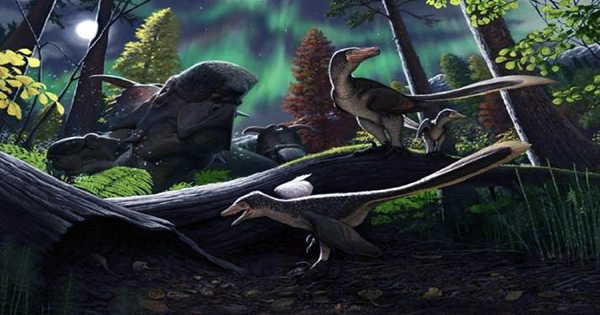Even among the dreadful lizards, when a peer-reviewed scientific publication refers to a group of dinosaurs as “bizarre,” you know they stand out. In comparison to other dinosaur lineages, we know very little about spinosaurids, which is exacerbated by the fact that the bones from which the family was named were lost during World War II. A reevaluation of one specimen, on the other hand, could aid our understanding of the development of these massive semi-aquatic carnivores. Spinosaurus was the world’s largest terrestrial carnivore, measuring roughly 15 meters (50 feet) in length. Despite featured in Jurassic Park III, it was never as well-known as Tyrannosaurs, maybe because it lived in Africa and fewer fossils have been discovered.
Spinosaurids are a group of about a dozen taxa that share crocodile-like heads and retracted nostrils with Spinosaurus, implying a semi-aquatic existence – though this isn’t proven. Many, but not all, had the massive sails that gave the original species its name on their backs. The evolution of spinosaurids has been particularly enigmatic; during the past 50 million years, the few fossils that could be from their predecessors have also had alternate explanations, prompting palaeontologists to speak to a “ghost lineage.” According to a new article published in PLOS ONE, a controversial specimen known as ML1190 could partially fill the gap.
ML1190 was discovered in 1999 in 125 million-year-old Portuguese rocks and was described for the first time in 2011. Since then, several attempts have been undertaken to figure out where it belongs in the dinosaur family tree. Whereas many examples are just a single bone or tooth, a good portion of ML1190 has survived, but in poor form, with nearly as many fragments of teeth and ribs as entire bones.
Octvio Mateus and Dario Estraviz-Lpez of the NOVA School of Science and Technology in Portugal suggest that ML1190 is a new species called Iberospinus Natarioi, which they regard to be an early spinosaurid. ML1190 has been classified as a member of the Baryonyx genus, with the recognized species B. walkeri being included in some previous reports. The scientists conclude that Iberospinus was a fish-eater who walked through rivers and swampland in quest of food, while it also ate other animals that died along riverbanks or foolishly strayed too close. They don’t know how big it was in total, but it was probably around the same size as B. walkeri’s estimated 9 meters (30 feet).
Although numerous spinosaurids lived in Africa, including the largest, the authors conclude that the group originated in Western Europe, most likely from the Iberian Peninsula, long before high sea levels converted Iberia into an island. Even if Iberospinus fills in some of the gaps in time, the evolution of spinosaurids over 30 million years remains a mystery, and only the discovery of Jurassic fossils will shed light on it.
















